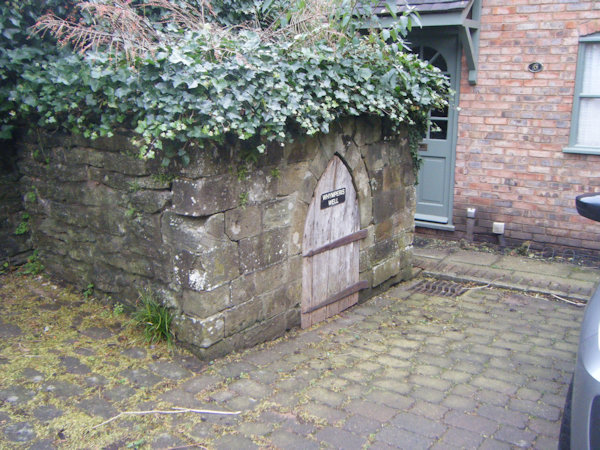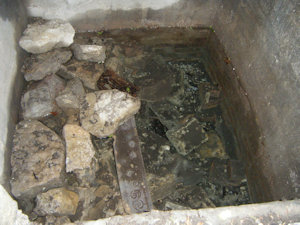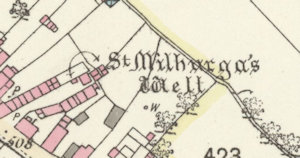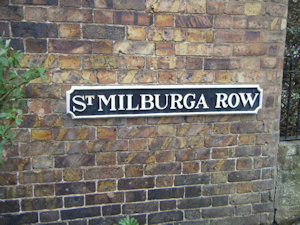 |
Dedication: Saint Milburga? Location: Much Wenlock Coordinates: 52.595056N, -2.554583W Grid reference: SO625998 Heritage designation: none |
HOME - ENGLAND - SHROPSHIRE
 |
Dedication: Saint Milburga? Location: Much Wenlock Coordinates: 52.595056N, -2.554583W Grid reference: SO625998 Heritage designation: none |
Better known by its alternative name, "Whymperis Well" (so used here to distinguish it from the other well), this is the second well in Much Wenlock that is supposed to have been dedicated to St Milburga. Milburga, also called Milburgha and sometimes just Milburg, was the abbess of Wenlock Priory (which is consecrated to her) during the 7th and possibly early 8th century. Her father Merewalh was king of the Anglo-Saxon kingdom of Magonsaete, of which Much Wenlock was a part; after he, along with Milburga's uncle, Wulfhere, founded Wenlock Priory, she became the establishment's second abbess. When she was canonised following her death in the early 8th century, many medieval hagiographers got to work writing accounts of miraculous events that had supposedly occured during her lifetime, and her popularity grew. In 1101, Milburga's bones, which had until then been lost, were supposedly rediscovered beneath the floor of what is now Holy Trinity Church, and were translated to the Priory, where a shrine was erected to her. Over the centuries following this, her supposed bones attracted many pilgrims, and stories of miracles became attributed to the shrine, as well as to the holy wells of Much Wenlock, which formed an important part of any pilgrimages to the shrine.
The exact history of the mysteriously named "Whymperis Well" is slightly murky. Despite its current name, the well has, until recently, always been marked and named as "St Milburga's Well" (in the Gothic script) on Ordnance Survey maps. The well was evidently in use until relatively recently, too, as proven by the fact that a pump was shown to have been erected next to the well on a 25-inch Ordnance Survey map of 1902. On these such maps, the other St Milburga's Well is marked but never named; this has given rise to the theory that the surveyors were incorrect and mistook Whymperis Well for the possibly more legitimate one to the north. It is possible, however, that there were at one point two wells dedicated to St Milburga in the town, so they may not have been wrong. As for the name "Whymperis", its origins are not clear, but it may be a corruption of another word. In the 13th century it was stated that "St. Mildburg's Well" was on Barrow Street, and in 1730 it was said to have been located "in a narrow lane turning out of Barrow Street". Whymperis Well fits this description, but, unfortunately, the other St Milburga's Well does too, so these references cast little light on the issue.
Whatever its original dedication, it has certainly now become associated with St Milburga (even if only due to Ordnance Survey mapping of the area), and it survives in exceptionally good condition, despite the fact that it is neither a listed building nor a scheduled monument. The pump no longer exists, but the medieval well-house does, and it seems that it has remained unchanged for these last few centuries. At the time of visiting (December 2024), there was a good depth of clear water inside the well, and the building looked well cared for. There was a large quantity of what looked like large stone blocks inside the well; from their appearence, they were very old and resembled the sort of stone blocks that may be found in the wall of a medieval church. It was evident that they had not come from the well-house itself, and must have been brought from some other building.
 |
 |
 |
 |
|
Access: The well is located at the end of a short public road. |
Images:
Old OS maps are reproduced with the permission of the National Library of Scotland
Copyright 2025 britishholywells.co.uk